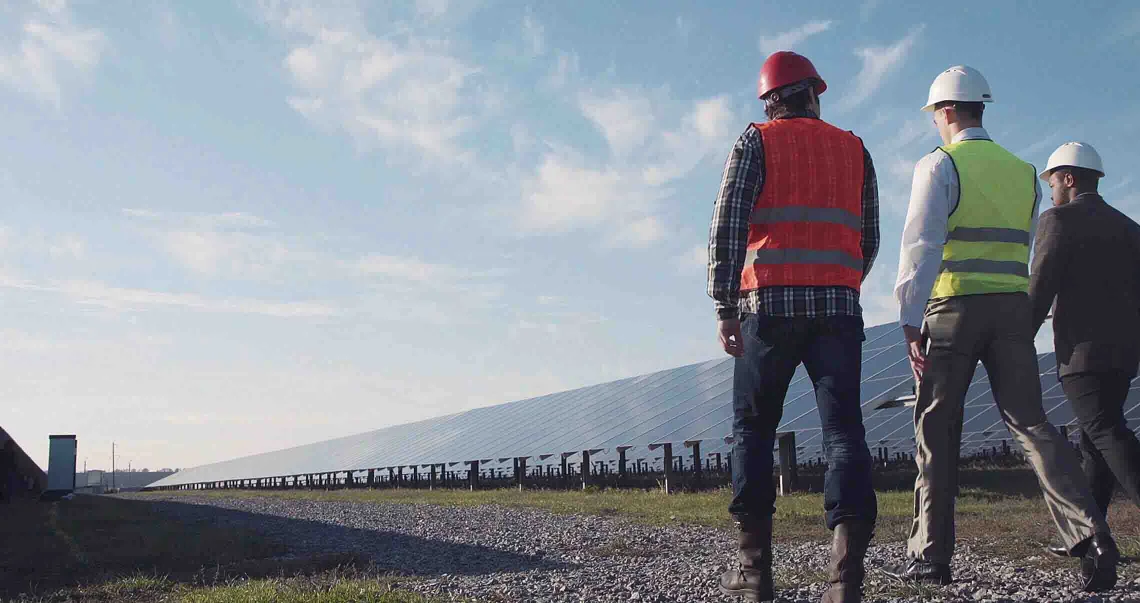Digital banking for business
Seamlessly access all of your accounts from one place with First Citizens Digital Banking for business.
The latest architecture trends reflect an increasing commitment to sustainability and environmental protection, as well as innovative designs.

Firms looking to compete for projects in this environment face unique challenges in sourcing materials and managing direct and indirect costs. But with strategic partnerships and creative design approaches, your firm can tackle these hurdles head-on.
Building construction and maintenance continue to be major drivers of environmental concern. Clients are demanding a sustainability mindset in project design that tackles factors such as energy conservation and waste reduction—without sacrificing aesthetic results.
Architects often work alongside engineers to devise water-saving and energy-efficient features or innovate ways to optimize environmental factors like sunlight and wind direction. A design team might create a building envelope that mitigates the requirements for a heating, ventilation and air conditioning system. Integrated solar panel installations can harvest renewable energy.
Sought-after eco-friendly materials for these projects include cross-laminated timber and mass timber panels to replace metal and solid wood as structural beams in buildings and homes. These timber panels, made from post-industrial waste wood and smaller dimension trees, protect old-growth forests and can be cost-effective. Other types of nontoxic construction materials can decrease the use of volatile organic compounds and air quality concerns of conventional building materials.
Meanwhile, constraints on regional water supply and sewage treatment have sparked mounting interest in cost-effective ways to minimize water consumption and waste.
Popular architectural design trends include:
Many architects are also finding that they need to design more resilient buildings that can withstand changing climate patterns and catastrophic events like floods, hurricanes and natural disasters. All of these design trends rely on architects' ability to manipulate views, lighting, energy use and other construction elements to ensure sustainable approaches are actually pleasant for people to inhabit.
Also, don't rule out advanced architecture software and technology systems for low-cost optimizing of sustainability design. It could give your architecture firm a competitive advantage in a potentially crowded landscape.
With several recent innovations, smart building architectural trends are quickly revolutionizing sustainable design.
The two most critical smart building architecture innovations are the Internet of Things, or IoT, and artificial intelligence, or AI. IoT facilitates seamless automation and optimization by enabling the connection and control of various building systems. AI and machine learning take energy efficiency to the next level by analyzing data and making intelligent decisions that optimize energy consumption—all while improving comfort for occupants.
With these advancements in AI and machine learning, smart buildings will become active participants in managing energy demand, optimizing grid stability and utilizing renewable energy sources effectively—all in service of a cost-effective, sustainable energy ecosystem.
Sustainable projects can yield a variety of economic advantages and positive experiences for clients. The challenge is meeting changing market demands while still being able to price design services competitively.
Factors like site selection, orientation and building volume can influence energy consumption, as well as materials cost. Spatial solutions can also save materials and labor, which might mean designing a living or working area into the exterior of a structure or reducing project size.
Eliminating unnecessary conventional features can allow for better natural light capture. For example, doors might not be necessary in areas that don't require privacy.
Despite the ever-rising costs in all types of construction, passing increases on to clients may not always be a sound strategy. Buildings designed for sustainability, however, can cost less in the long run. Green features may deliver lower annual costs for energy, water, maintenance, space reconfigurations and operating expenses. ROI may also be stronger, which can increase property value. For example, a green roof can last two to three times as long as an asphalt roof. This can lead to cost savings from not having to replace loose shingles every 4 to 5 years.
When working with a client, first understand the sustainability outcomes they want to achieve. Discover their reasons for these goals. Are there local regulatory requirements that need to be met? Maybe the client's desire for a particular specification is motivated by personal values or potential cost savings. Work out together how sustainability aligns with the project goals and circumstances.
Building architect-client relationships on a foundation of trust, open communication and effective collaboration results in better project outcomes and sets the trend for future builds.
To deliver architecture trends clients want at a competitive price, assume ownership of your supply chain—and ideally, your chain of custody of materials—as early as possible. Work in partnership with suppliers, but avoid delegating critical requirements.
Strive to see opportunities for efficiencies as they arise in the supply chain so you can:
Make supply chain sustainability requirements contractually enforceable, using objective measures so failures can be quickly discovered and remedied. Explore local sourcing or prefabricated options. Specializing in the design of a high-demand feature can provide opportunities to purchase relevant materials in larger quantities at a better price. Also, more manufacturers are offering circular life cycle materials, such as glass and crushed cork, so price negotiation might become easier.
Meeting today's demands for sustainable designs doesn't have to be only a challenge—it can also be an opportunity. Distinguish your firm from its competitors by building a reputation for creative designs that address environmental concerns while also saving costs.
We have a deep understanding of the architectural industry—and solutions to help you build your business. Let us do the heavy lifting so you can focus on what you do best.
Email Us
Please select the option that best matches your needs.
Customers with account-related questions who aren't enrolled in Digital Banking or who would prefer to talk with someone can call us directly.